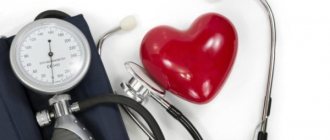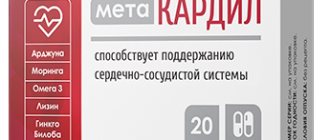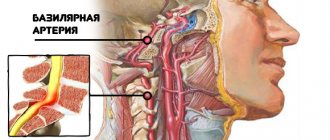The force with which blood flows through the vessels is one of the most important indicators that determines the state of health. Diastolic pressure is used by doctors to diagnose various diseases. What indicators are considered normal, what diseases are indicated by their increase or decrease?
What is blood pressure?
Blood pressure, or blood pressure, is the force with which blood presses from the inside onto the walls of blood vessels. Due to the fact that in nature there is also atmospheric pressure, which exerts its influence on all living organisms and objects, blood pressure is the amount by which blood pressure exceeds atmospheric pressure.
Each heartbeat sets the blood in motion, creating upper pressure (systolic) and lower pressure, which is measured at the moment the heart muscle relaxes, that is, in the intervals between beats. This pressure is called diastolic.
Upper pressure shows the force with which the heart, at the moment of compression, pushes blood out of the left ventricle. At this point the highest indicator is noted. As the force of the push is distributed throughout the circulatory system, the pressure loses its original value and a lower value is noted at the entry point into the heart.
At the moment when the heart relaxes after a beat and its valve closes, blood fills the small vessels and capillaries. Pressure may increase during this period due to the response of the arteries to the blood flow. Generally, the higher the systolic pressure, the more resistance the artery walls have. This means that when the upper pressure is high, the lower pressure often increases.
Characteristic symptoms
Isolated diastolic hypertension, what this means, has now become clear. But you need to find out what symptoms accompany the disease in order to consult a doctor in time. The main manifestations of pathology are:
- unexpressed headaches, accompanied by dizziness and weakness;
- blurred vision, flickering “spots”, blurred image;
- shortness of breath that occurs regardless of physical activity;
- weakening of the capillary walls, manifested by periodic nosebleeds.
During periods of exacerbation of the disease, a person feels discomfort, his performance decreases, and emotional and physical decline is noted. Since pressure 100/100 is uncertain, that is, it is not clear which drugs can improve well-being in a particular situation, it is better not to self-medicate. You should contact a specialist to find out the reasons for such tonometer readings; he will select a suitable treatment regimen.
Lower pressure 90 - is this normal?
Every person should have a blood pressure monitor in their first aid kit. If there is no one in the family who could manually inflate the cuff with a bulb and determine the pressure parameters by the movement of the arrow, you can buy an automatic device. It is not much more expensive, and in addition to pressure, it also counts the pulse and can determine signs of arrhythmia. Feeling unwell for no apparent reason should be a reason to measure your blood pressure.
The optimal indicators are considered to be a pair of systolic and diastolic pressures of 120/70 Hg, but even if these numbers rise to 130/80 Hg, this will be considered normal. Values of 140/90 Hg and above are considered elevated. With these values, the doctor can already diagnose arterial hypertension and prescribe a course of treatment.
A lower pressure of 90 units indicates the onset of hypertension. Such values can also appear at a young age, so not only older people need to monitor their blood pressure. Young people have a higher tendency to identify chronic pathologies, which are often accompanied by associated complications.
Diagnostics
If a patient has a lower pressure of 100, then you need to determine what this means in a particular case.
To do this, you need to undergo a comprehensive diagnosis:
- biochemical and general blood test;
- ultrasonography;
- dopplerography of the head;
- ECG.
When the heart pressure reaches 100, the heart hurts; It is customary not to take medications for systematic treatment without consulting a doctor, but to track the values throughout the day and write them down in a notebook.
The dynamics of changes in indicators will be assessed by a qualified specialist.
Increased lower pressure: causes
Lower blood pressure readings are often affected by emotional overload, stress, and excessive physical activity. If you have heart disease, it is important to avoid such situations. In addition, alcohol and salt can change the values. These two products have pronounced activity regarding the condition of blood vessels. Do not forget about smoking - this is an important factor that impedes the passage of oxygen through the bloodstream, reduces the elasticity of the walls of blood vessels and, as a result, makes them unable to respond to changes in external and internal factors.
Other reasons that increase lower blood pressure may be:
- adrenal dysfunction;
- pyelonephritis;
- renal failure;
- polycystic disease;
- amyloidosis;
- disorders of the thyroid gland, manifested by excessive or insufficient amounts of hormones produced.
- obesity;
- musculoskeletal problems;
- disturbances in the functioning of the heart.
An increase in lower pressure causes the kidneys to produce more renin - a special biological substance that, in the process of complex chemical reactions, activates the production of elements that have a vasoconstrictor effect. As a result, the heart is stimulated and blood pressure increases, which further aggravates the situation.
This situation can lead to chronic glomerulonephritis and kidney abnormalities. Normal blood flow is disrupted, the myocardium loses its ability to relax, the walls begin to be damaged, and their ability to stretch and contract in response to changes in temperature and other physical indicators decreases.
The absence of measures taken to normalize blood pressure will sooner or later lead to thromboembolism and impairment of cognitive reactions.
Why is this condition dangerous?
The most dangerous disease is isolated diastolic hypertension for pregnant women, children and the elderly. In the absence of diagnosis and timely treatment, pathology leads to the development of negative consequences for the body:
- thinning of arterial walls, changes in capillary permeability;
- deterioration of blood flow;
- increased tension in the heart muscle, which interferes with its relaxation;
- pathological narrowing of blood vessels up to complete blocking of their lumen;
- disruption of the arterial bed.
Against the background of negative changes in the functioning of the cardiovascular system, diseases such as renal failure, chronic arterial hypertension, the formation of blood clots in capillaries, stroke, and myocardial infarction occur.
What to do if the tonometer increasingly begins to show levels close to 100/100 - do not self-medicate, but visit a specialist
How to lower lower blood pressure
To normalize blood pressure, you must first understand the reasons that increase it. For example, with adrenal or thyroid dysfunction, the cause is improper hormone production. When they are in excess, the lower blood pressure rises sharply. A person with one kidney in such an acute condition can die.
If jumps in lower pressure occur due to the accumulation of fluid in the body, it is important to establish the water-ion balance. In some people, it is disrupted due to poor nutrition, overeating, and abuse of salty and fatty foods. For others, fluid stagnation is caused by an imbalance of hormones. In the first case, you can return your lower blood pressure to normal by restoring your diet, daily physical activity, and excluding large amounts of salty, smoked, and fried foods. In a situation with the influence of hormonal levels, it is necessary to receive a course of treatment from an endocrinologist.
When lower pressure increases, the synthesis of renin is disrupted, which should normalize the force of action on the walls of blood vessels. But due to atherosclerosis, the pressure cannot be reduced - even with high elasticity of the walls, the lumen remains narrow due to overgrown atherosclerotic plaques. In such a situation, first of all, it is necessary to reduce the level of bad cholesterol in the blood and monitor its levels.
Treatment
When your heart pressure is above 100, you need to know what to take and how to act to lower it.
To obtain a positive result, it is important to carry out complex treatment, taking into account the individual characteristics of the patient’s body and his age.
Based on the situation, the patient may be recommended one of the treatment methods - medicinal or non-medicinal. Each specific case requires a thorough study of the problem in order to correctly prescribe drugs.
Non-drug methods
Non-drug treatment involves following some important recommendations, namely:
- it is required to stop drinking alcoholic beverages and smoking;
- if necessary, you need to get rid of excess weight;
- It is recommended to exercise daily, performing simple gymnastic elements;
- you should try to avoid stressful situations and excessive physical activity;
- It’s worth eating with a proper diet.
With high blood pressure, proper rest is of no small importance. If the work is sedentary, you should take frequent breaks to perform therapeutic exercises.
All these recommendations will help normalize the lower pressure mark and keep it within acceptable limits.
Non-drug therapy also involves the use of herbal ingredients. For hypertensive patients the following will be useful:
- horsetail tincture;
- bearberry decoction;
- remedy from lingonberry leaves.
You can see if these herbal remedies help in just a couple of weeks. When using folk remedies, you should not hope for instant results.
Use of medications
If you cannot reduce the lower pressure, which has risen to more than 100 mm Hg. Art., through traditional medicine, it can be confidently knocked down with medications after doctor’s prescriptions.
If arterial hypertension occurs, the patient should take pharmaceutical medications.
They are divided into several categories:
- adrenergic blockers (to eliminate heart failure and treat vascular diseases);
- calcium antagonists (help in the treatment of heart disease);
- ACE inhibitors (lower blood pressure and expand the vascular lumen).
In order to normalize oxygen metabolism, the drugs Concor or Corvalol are often prescribed.
If the lower blood pressure readings do not exceed 90, then to prevent its further increase, you can take tincture of valerian or hawthorn.
Forecast
If you take the necessary measures in a timely manner, you can normalize your blood pressure and achieve lasting results. True, there are situations when you have to take medications and herbal tinctures constantly.
To exclude serious health problems and receive the correct prescription, you should definitely visit a doctor and undergo the recommended diagnostics. In the worst case, there is a high risk of stroke or myocardial infarction.











